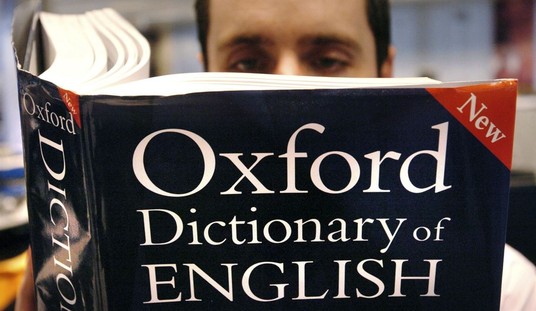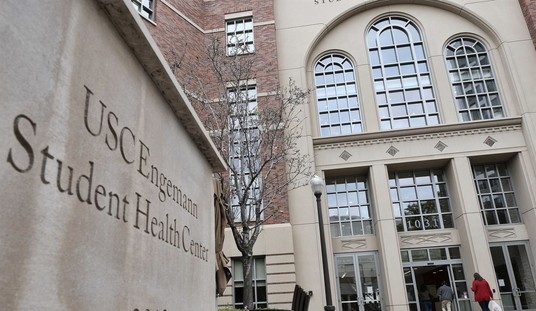Election, shmelection. When it comes to keeping the enterprise known as the United States of America solvent, aka avoiding the Fiscal Cliff, the country is right back where it was November 6, 2012. With pretty much the same cast of characters in this practiced face-off: the president vs. Congress, specifically the Republican-dominated House.
This now annual showdown might as well be one of those daily re-enactments of the Gunfight at the OK Corral staged to entertain the tourists, and it's getting just as old. Even as the advance billing gets more and more shrill: The End is Near! Bush Tax Cuts Threatened! Automatic Tax Hikes Ahead! All is almost lost! Who will blink first? Stay tuned -- and very nervous.
This recurring crisis has grown familiar, like a melodrama with daily matinees and immediate seating. The president says the government needs more revenue to balance its books, while the loyal opposition says the country doesn't need even higher tax rates. Especially on capital that could otherwise get this stalled economy moving. Welcome to Impasse City.
Both sides are right. So why not find a way to compromise, a way to assure more tax revenue but not raise tax rates all across the board?
Here's how to do it: The voluminous U.S. tax code, perhaps the most indecipherable document since the Book of Revelation, is stuffed with special exemptions, deductions and tax breaks for just about every special interest with friends in Washington. Why not cut out some of those tax breaks? The federal fisc would be a lot healthier for it, and the American tax structure a lot fairer.
Recommended
Ah, but which exemptions and deductions should be eliminated? And which should be saved? Everybody seems to have his own list of both favorites and expendables. So does every vested economic interest with its own lobby, trade association or foundation.
That's the problem Mitt Romney (remember him?) ran into when he proposed cutting back tax breaks while lowering tax rates during the late unpleasantness known as an American presidential election. Challenged to name just which tax breaks he'd cut out -- that is, just which powerful interest and bloc of voters he would offend -- he came up with an approach that was both politic and fair:
Put a cap on the amount of exemptions and deductions any taxpayer can claim, and let the taxpayer himself choose which ones he'd give up.
Want to forgo the tax deduction for the interest paid on your mansion's mortgage, but keep the one on your gifts to charities? Fine. Or vice versa. So long as you stay within your limit of deductions and exemptions. The choice is yours.
But would limiting tax breaks really provide enough additional revenue to reduce the federal government's increasingly unmanageable deficits? It all depends on how much of a tax break you'd allow each taxpayer to keep.
Capping all itemized deductions at $50,000 a year would mean an extra $749 billion for Uncle Sam over the next decade.
Lowering that cap on such tax breaks to $25,000 a year would raise some $1.3 trillion over the same period.
Mitt Romney had the best and fairest suggestion: Adopt an annual limit of $17,000 per taxpayer, and tax revenue would increase by some $1.7 trillion by 2022. Which would make the country's tax structure more progressive and provide more revenue for the government at the same time.
That holds true even if income tax rates were cut by 20 percent and the dreaded Alternative Minimum Tax eliminated. The AMT becomes a greater and greater drain on the country's middle class as the value of the dollar shrinks and tax-paying Americans find themselves in ever higher income brackets. The thing needed killing years ago.
Note that all these revenue estimates come not from the Heritage Foundation or Cato Institute or some other conservative think tank but the anything-but-conservative bean counters at the Tax Policy Center, a reliably left-of-center source of economic analysis. At last, something left and right, liberal or conservative, could agree on.
Problem solved. Or would be if the more partisan pols in Washington could recognize a fair -- and constructive -- compromise when they saw it. And transform gridlock into opportunity.
The biggest obstacle to such an approach may be the president's attachment to class warfare. He seems fixated on raising tax rates for those Americans making more than $250,000 a year -- even if they'd wind up actually paying more if tax breaks were limited rather than tax rates raised.
If only our president would lay aside his my-way-or-no-way pride at this critical juncture, Washington's wild Thelma-and-Louise drive over the Fiscal Cliff could come to a screeching halt just in time. But that may be too much to hope for. Ideology has a way of trumping common sense among true believers.
























Join the conversation as a VIP Member